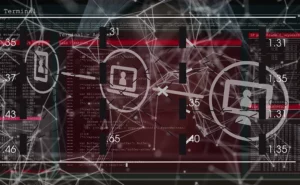

An introduction to SBOM: Role and importance in software security
A Software Bill of Materials (SBOM) provides a comprehensive inventory of a software system's components and their dependencies and is emerging as a key solution for software security and compliance. Unlike traditional inventory lists, SBOMs offer granular visibility into the software supply chain and help track dependencies across the system.
In today’s digitally connected world, where software powers critical infrastructure and drives business operations, ensuring the security and integrity of software applications is paramount. One emerging solution gaining traction is the Software Bill of Materials (SBOM), a comprehensive inventory of a software system’s components and their dependencies. In this blog post, we will delve into the concept of SBOM, its importance in software development, and the numerous benefits it brings to the table.
What is Software Bill of Materials (SBOM)?
An SBOM is a detailed record of all software components, including open-source libraries, commercial software, and proprietary code, used in building an application. It provides a holistic view of a software system’s composition and its underlying building blocks. The objective of an SBOM is to accurately list these components, providing software users visibility over what is included in a software product, so that the components adhere to security and compliance standards. Unlike traditional inventory lists, SBOMs offer granular visibility into the software supply chain and help track dependencies across the system.
SBOMs are typically created using standardized formats such as Software Package Data Exchange (SPDX) which is sponsored by the Open Web Application Security Project (OWASP) or CycloneDX, a project maintained by the Linux Foundation. These formats capture essential information about each component, including version numbers, licenses, and known vulnerabilities.
The need for SBOM
The need for SBOMs has become increasingly apparent due to the rise in software vulnerabilities and security incidents. Cyberattacks leveraging unpatched vulnerabilities in software components have become a common occurrence, affecting organizations across various industries. Recent high-profile incidents such as the Log4j vulnerability, have highlighted the consequences of neglecting software supply chain security.
Regulatory agencies and industry bodies are recognizing the importance of SBOM adoption. For instance, the U.S. Cybersecurity and Infrastructure Security Agency (CISA) issued a directive requiring federal agencies to produce SBOMs for their software acquisitions. Similarly, the National Telecommunications and Information Administration (NTIA) has initiated efforts to promote SBOM adoption across industries.
The benefits of SBOM
Having an SBOM for your software is like having a blueprint for a building – it lets you see what’s inside and how everything fits together. This clarity brings several benefits and enables organizations to mitigate risks effectively. Here are some key advantages:
- Enhanced Supply Chain Security: SBOMs offer a comprehensive view of the software supply chain, enabling organizations to identify vulnerabilities and risks associated with third-party components. By understanding the dependencies and potential security weaknesses, organizations can make informed decisions regarding software procurement and mitigate supply chain risks effectively.
- Streamlined Vulnerability Management: One of the primary benefits of SBOMs is their ability to streamline vulnerability management. By providing detailed information about each component, including version numbers and known vulnerabilities, SBOMs enable organizations to proactively identify and address security issues. This allows for faster and more efficient vulnerability management, reducing the risk of exploitation.
- Enhanced Software Asset Management: SBOMs enable organizations to track and manage licenses, monitor software usage, and ensure compliance with component-level licensing agreements. This helps optimize software procurement, reduce costs, and streamline license management processes.
- Improved Incident Response: In the event of a security incident or a vulnerability disclosure, SBOMs provide critical insights into the affected software components. This allows organizations to quickly assess the impact, identify affected systems, and prioritize remediation efforts, resulting in faster incident response and minimizing potential damages.
- Greater Trust and Competitive Advantage: SBOMs promote transparency and trust among stakeholders, including customers, partners, and regulators. By providing clear visibility into the software supply chain, organizations can demonstrate their commitment to security, thereby enhancing trust and setting them apart from competitors
Conclusion
As the software landscape evolves, ensuring robust security practices becomes increasingly crucial. SBOM can be a powerful tool to enhance software supply chain security, facilitate vulnerability management, and ensure compliance with regulatory requirements. Embracing SBOMs is not only a step towards fortified software security but also a commitment to transparency, trust, and resilience in an increasingly interconnected digital world.
To get daily updates on the critical vulnerabilities being exploited by threat actors, subscribe to SISA Daily Threat Watch – our daily actionable threat advisories.
For a deeper understanding of how you can prevent these threats from affecting your organization, request a call to get in touch with our experts.
Latest
Blogs
Whitepapers
Monthly Threat Brief
Customer Success Stories

SISA is a Leader in Cybersecurity Solutions for the Digital Payment Industry. As a Global Payment Forensic Investigator of the PCI Security Standards Council, we leverage forensics insights into preventive, detective, and corrective security solutions, protecting 1,000+ organizations across 40+ countries from evolving cyberthreats.
Our suite of solutions from AI-driven compliance, advanced security testing, agentic detection/ response and learner focused-training has been honored with prestigious awards, including from Financial Express, DSCI-NASSCOM and The Economic Times.
With commitment to innovation, and pioneering advancements in Quantum Security, Hardware Security, and Cybersecurity for AI, SISA is shaping the future of cybersecurity through cutting-edge forensics research.
Company
Resources
Quick Links
Copyright © 2025 SISA. All Rights Reserved.
 USA
USA India
India APAC
APAC Middle East
Middle East Global
Global





 Facebook
Facebook Linkedin
Linkedin  X
X Youtube
Youtube





